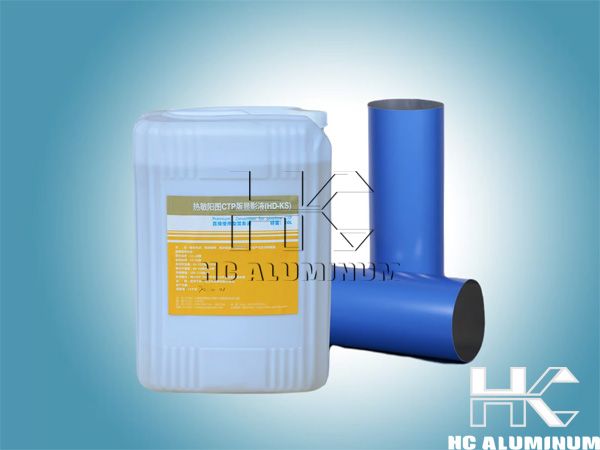CTCP Plate Developer
CTCP plate developer
is a chemical liquid used in CTP plate making process, mainly used for
developing printing plates, removing unexposed photographic materials,
and forming graphic parts that can be used for printing. The plate
developer usually contains water, alkaline substances (such as sodium
hydroxide), solvents, surfactants and additives, etc. The selection and
quality of the CTCP plate developer has a significant impact on the
printing quality and plate making efficiency.

HC is a manufacturer of CTCP plate developer, offering a wide range of plate developer
for its CTCP plates and UC CTP plates, characterized by high efficiency
development, good stability, suitable for high quality printing needs.
Environmentally friendly formula, good compatibility with printing
plates, even development, reduced scrap rate, suitable for high
productivity environment.
Product Name: CTCP Plate Developer
Main ingredients: water, sodium hydroxide, surfactant
pH value: 11.0
Appearance: Transparent light yellow liquid
Density: 1.05 g/cm³
Developing time: 60 seconds
Dilution ratio: 1:4
Use temperature: 20°C-25°C
Storage conditions: cool and dry place, avoid direct sunlight
Shelf life: 12 months
Main components and characteristics of CTCP plate developing solution:
- Alkaline component:
Sodium hydroxide (NaOH): a commonly used alkaline ingredient that helps dissolve unexposed photographic layers.
Sodium carbonate (Na2CO3): another common alkaline ingredient with low corrosive properties, suitable for certain types of printing plates.
- Surfactants:
Nonionic surfactants: help to improve the wettability and permeability of the developing solution, resulting in a more uniform development process.
Anionic surfactants: Enhance the cleaning ability of the developer to remove residues.
- Chelating agent:
EDTA (Ethylenediaminetetraacetic acid): used to chelate metal ions and prevent the influence of metal ions on the developing process.
- Stabilizers:
Inorganic salts: such as sodium sulfate (Na2SO4), help stabilize the pH and performance of the developer.
Organic acids, such as acetic acid, regulate the pH of the developer to keep it within the appropriate range.
- Preservatives:
Sodium benzoate: prevents the growth of microorganisms in the developer and extends the life of the developer.
Considerations when selecting a CTCP plate developer:
- Compatibility: Ensure that the developer is compatible with the CTP printing plate being used.
- Developing speed: Choose a product with fast developing speed to improve productivity.
- Environmental friendliness: Prioritize environmentally friendly formulations to reduce the impact on the environment.
- Stability: The chemical stability of the developer is critical to plate quality.
- Customer service: Choose a manufacturer with good customer service and technical support.
The choice of CTCP plate developer should be based on specific printing needs, equipment type and environmental requirements. It is recommended to communicate with the manufacturer or supplier for detailed product information and technical support to ensure the most suitable product is selected.
评论
发表评论